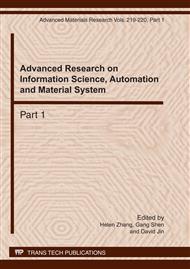p.279
p.284
p.289
p.293
p.298
p.304
p.308
p.312
p.318
Integral Input-to-Output Stability for one Class of Discontinuous Dynamical Systems
Abstract:
It is well known that integral input-to-output stability(IIOS) is weaker than input-to -output stability(IOS).In this paper,IIOS problems for one class of discontinuous dynamical systems are considered.Piecewise smooth IIOS-Lyapunov functions are adopted.Furthermore,interconnecti ons of discontinuous dynamical systems are studied.The results for a class of discontinuous dynam ical systems and interconnection of discontinuous dynamical systems' IIOS character are shown,res pectively.
Info:
Periodical:
Pages:
298-303
Citation:
Online since:
March 2011
Authors:
Price:
Сopyright:
© 2011 Trans Tech Publications Ltd. All Rights Reserved
Share:
Citation:


